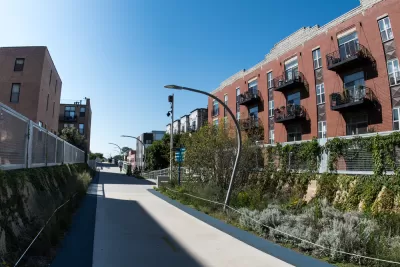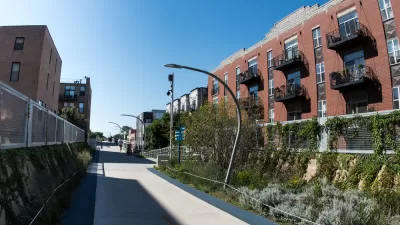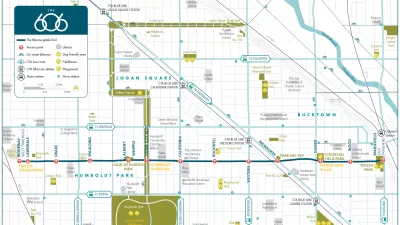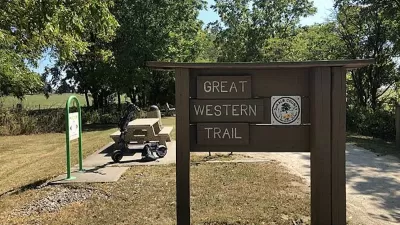Because the rails to trails project left housing up to the market, rising rents were inevitable, claims a new report.

Logan Square rents and property values have been on the rise, particularly in the part of the neighborhood around the 606. Whether or not the trail and its planners deserved any of the blame for that has been a subject of debate in the area for some time. A new report argues that it was a cause of rising costs and its were to blame. “Lower-cost housing was bound to be pushed out of neighborhoods along the 606 trail by more expensive replacements because of the way the rails-to-trails project was planned, a pair of academics claim in a scholarly journal,” Dennis Rodkin reports in Crain’s Chicago Business.
University of Illinois Professor Alessandro Rigolon contends that the project’s builders were content to see it as a purely parks and infrastructure venture and to leave housing prices to ride the market. Rigolon and his co-author, Professor Jeremy Nemeth of the University of Colorado, even titled the piece after a quote from a representative for the Trust for Public Land that did much of the work on the project who said, “We're not in the business of housing.”
Critics of the report (from the Trust for Public Land and elsewhere) point out that the neighborhood was already gentrifying and that some of the rising land value came from the neighborhood recovering from the great recession. Useful context to be sure, but not enough to convince observers that the trail didn’t force out residents.
FULL STORY: Was gentrification around the 606 inevitable?

Alabama: Trump Terminates Settlements for Black Communities Harmed By Raw Sewage
Trump deemed the landmark civil rights agreement “illegal DEI and environmental justice policy.”

Study: Maui’s Plan to Convert Vacation Rentals to Long-Term Housing Could Cause Nearly $1 Billion Economic Loss
The plan would reduce visitor accommodation by 25% resulting in 1,900 jobs lost.

Why Should We Subsidize Public Transportation?
Many public transit agencies face financial stress due to rising costs, declining fare revenue, and declining subsidies. Transit advocates must provide a strong business case for increasing public transit funding.

Wind Energy on the Rise Despite Federal Policy Reversal
The Trump administration is revoking federal support for renewable energy, but demand for new projects continues unabated.

Passengers Flock to Caltrain After Electrification
The new electric trains are running faster and more reliably, leading to strong ridership growth on the Bay Area rail system.

Texas Churches Rally Behind ‘Yes in God’s Back Yard’ Legislation
Religious leaders want the state to reduce zoning regulations to streamline leasing church-owned land to housing developers.
Urban Design for Planners 1: Software Tools
This six-course series explores essential urban design concepts using open source software and equips planners with the tools they need to participate fully in the urban design process.
Planning for Universal Design
Learn the tools for implementing Universal Design in planning regulations.
Caltrans
Smith Gee Studio
Institute for Housing and Urban Development Studies (IHS)
City of Grandview
Harvard GSD Executive Education
Toledo-Lucas County Plan Commissions
Salt Lake City
NYU Wagner Graduate School of Public Service





























